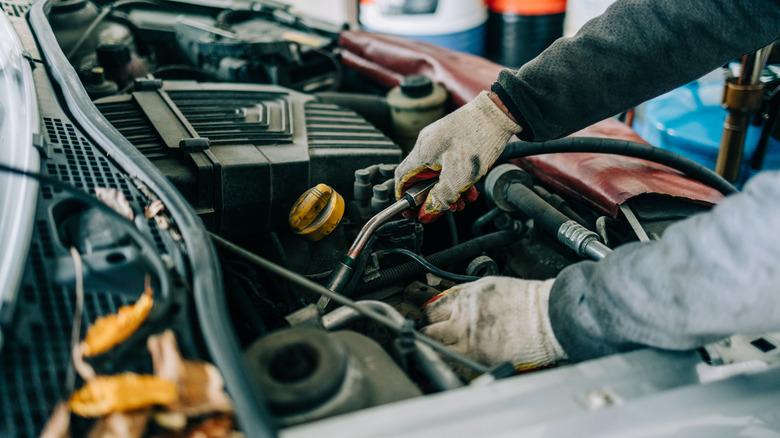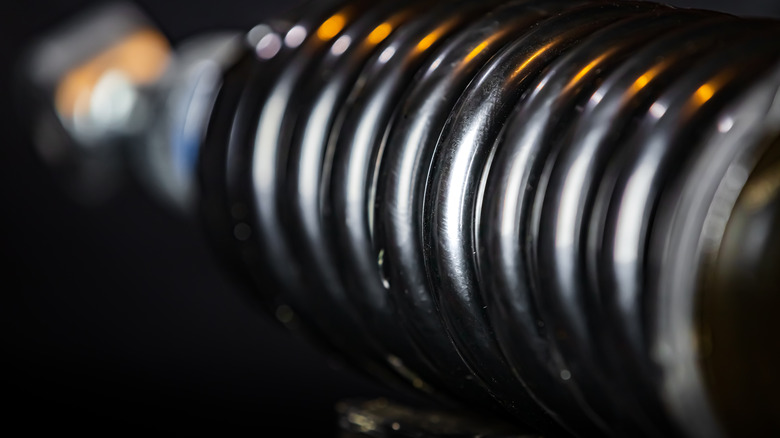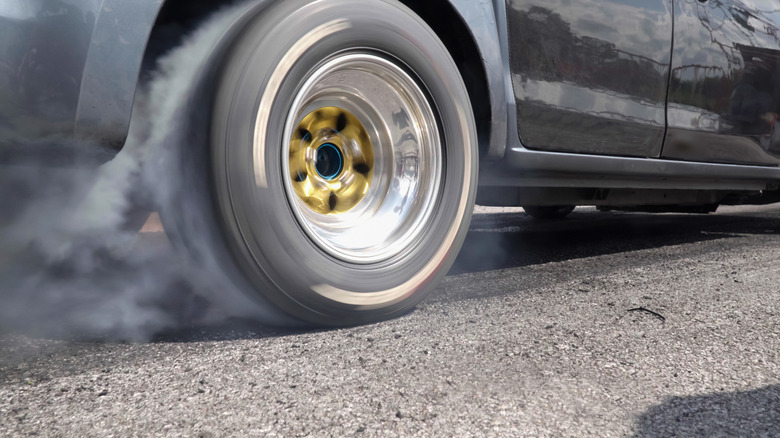Why You Should Upgrade A Car's Handling Before Adding More Horsepower To Its Engine
The thrill of driving a performance car often comes down to just one thing: speed. This is why car enthusiasts often chase that very ethos by swapping engine parts to squeeze every last bit of horsepower from their engines. However, there are several other important considerations to keep in mind when you are upgrading car engine parts to get more horsepower. At the end of the day, horsepower is only a single piece of the puzzle — albeit an exciting one.
With every increase in horsepower, proportional changes need to be made to a vehicle's suspension, tires, and brakes to make sure that the car continues to operate safely. Otherwise, the vehicle will struggle to control that extra power. In other words, upgrading a car's power without adjusting its handling characteristics can make the car more difficult to manage. With a solid upgrade in the handling department, you are creating a foundation that allows the added horsepower to fully translate onto the road without becoming a safety risk.
The most important handling mods to add before a horsepower boost
Ultra-high-performance tires, paired with properly sized wheels, can significantly enhance a car's handling. According to MotorTrend, "tires are the single most important component on a vehicle," meaning even the best engine and suspension combination can't do much without proper rubber. A performance suspension setup that includes lowered springs and coilover sets can also do a lot to improve a car's handling by lowering its center of gravity and reducing the risk of a rollover.
Other modifications — including adding strut bars, reducing the overall weight of the car, and installing anti-roll bars — are designed to make the car a lot more rigid. This improves a car's balance and responsiveness, allowing it to change direction quickly and maintain higher levels of stability when cornering at fast speeds. Installing a roll cage will make the car's chassis stiffer, which can also improve stability by reducing flexing that can occur at high speeds. If you're upping the horsepower capabilities of your car, you'll also want to increase the capabilities of your brake pads. You might consider installing some high-performance options to help shorten braking distances.
Common mistakes made when adding more horsepower to an engine
There are plenty of ways to get more horsepower out of your car, but tuning engines involves finding the right balance of power and handling for the vehicle you are working with. It's a complicated process, and there are many mistakes tuners can make along the way. Not having a set goal in mind can often result in unbalanced builds where other parts of the vehicle simply aren't able to cope with the increase in power. Moreover, with more power under the hood, attention must be given to how the drivetrain copes with the increase, as an imbalance here can lead to various reliability and safety problems.
It's a good idea to check whether there are any issues such as leaks or ticking noises when installing a new upgrade so that you can be sure to solve them as they come up. Lastly, it's never a good idea to ignore the cooling system since pushing serious horsepower numbers creates a lot of heat. Without proper cooling capabilities, your powerful engine risks overheating, which could result in critical damage.


